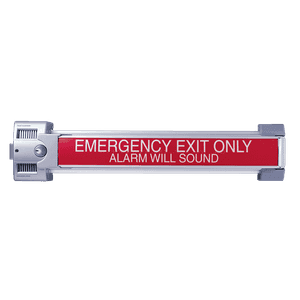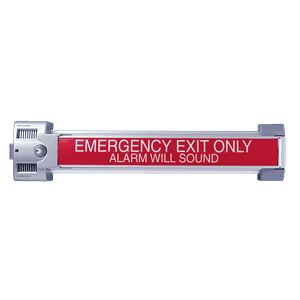ANSI/UL 305 Panic Hardware Standards
Safety standards for panic hardware and emergency exit devices
Last updated: September 25, 2025
Overview
ANSI/UL 305 is the Standard for Safety of Panic Hardware, establishing critical safety requirements for exit devices used on emergency egress doors. This standard ensures panic hardware provides reliable, immediate egress during emergency situations while maintaining security under normal conditions.
Originally published in 1955 and regularly updated, UL 305 has become the benchmark for panic hardware safety in North America. The standard covers both panic exit hardware and fire exit hardware, with specific requirements for each application type.
Testing Requirements
Endurance Test
Devices must complete 100,000 cycles of operation without failure. The test simulates years of normal use, with each cycle including full actuation of the panic bar and return to the secured position.
Force Requirements
| Test Type | Maximum Force | Measurement Point |
|---|---|---|
| Initial actuation | 15 lbs (66 N) | Center of push pad |
| Continued operation | 7 lbs (31 N) | After latch release |
| End actuation | 15 lbs (66 N) | 3" from each end |
Additional Tests
- Preload test: 250 lbs applied perpendicular to door
- Side load test: 75 lbs applied parallel to push rail
- Torque test: 150 lb-in applied to lever handles
- Temperature test: Operation from -31°F to 180°F
- Salt spray exposure: 240 hours for exterior hardware
Operational Criteria
Activation Requirements
- Push pad must extend minimum 50% of door width
- Activation height between 34" and 48" from floor
- No special knowledge required for operation
- Single motion activation without gripping or twisting
- Automatic re-latching when door closes
Performance Standards
- Latch projection: Minimum 1/2 inch when secured
- Latch strength: Withstand 1000 lbs static load
- End cap security: Resist 150 lbs pull force
- Trim operation: Function with door in any position
- Dogging capability: If provided, must be field-reversible
Fire Rating Requirements
For fire exit hardware applications, UL 305 includes additional requirements aligned with UL 10C fire testing:
20-Minute Rating
- Wood doors up to 1-3/4" thick
- Maximum 100 sq in glass
- Positive latching required
- Self-latching mechanism
3-Hour Rating
- Metal doors only
- No glass permitted
- Automatic bottom bolts allowed
- Temperature rise limits apply
Installation Guidelines
Proper installation is critical for UL 305 compliance and maintaining the listing:
Mounting Requirements
- Follow manufacturer template precisely
- Use only specified fasteners and quantities
- Maintain required edge distances
- Ensure proper alignment with strike plates
- Verify smooth operation before finalizing
Common Installation Errors
- Incorrect mounting height (must be 34"-48")
- Misaligned strikes causing binding
- Over-tightened fasteners restricting movement
- Missing or incorrect reinforcement plates
- Improper adjustment of latch projection
Installation must be performed by qualified personnel familiar with the specific hardware model and door construction. Improper installation voids the UL listing and may violate building codes.
UL 305 Listed Panic Hardware
Was this guide helpful?
Your feedback helps us improve our resources and guides.

